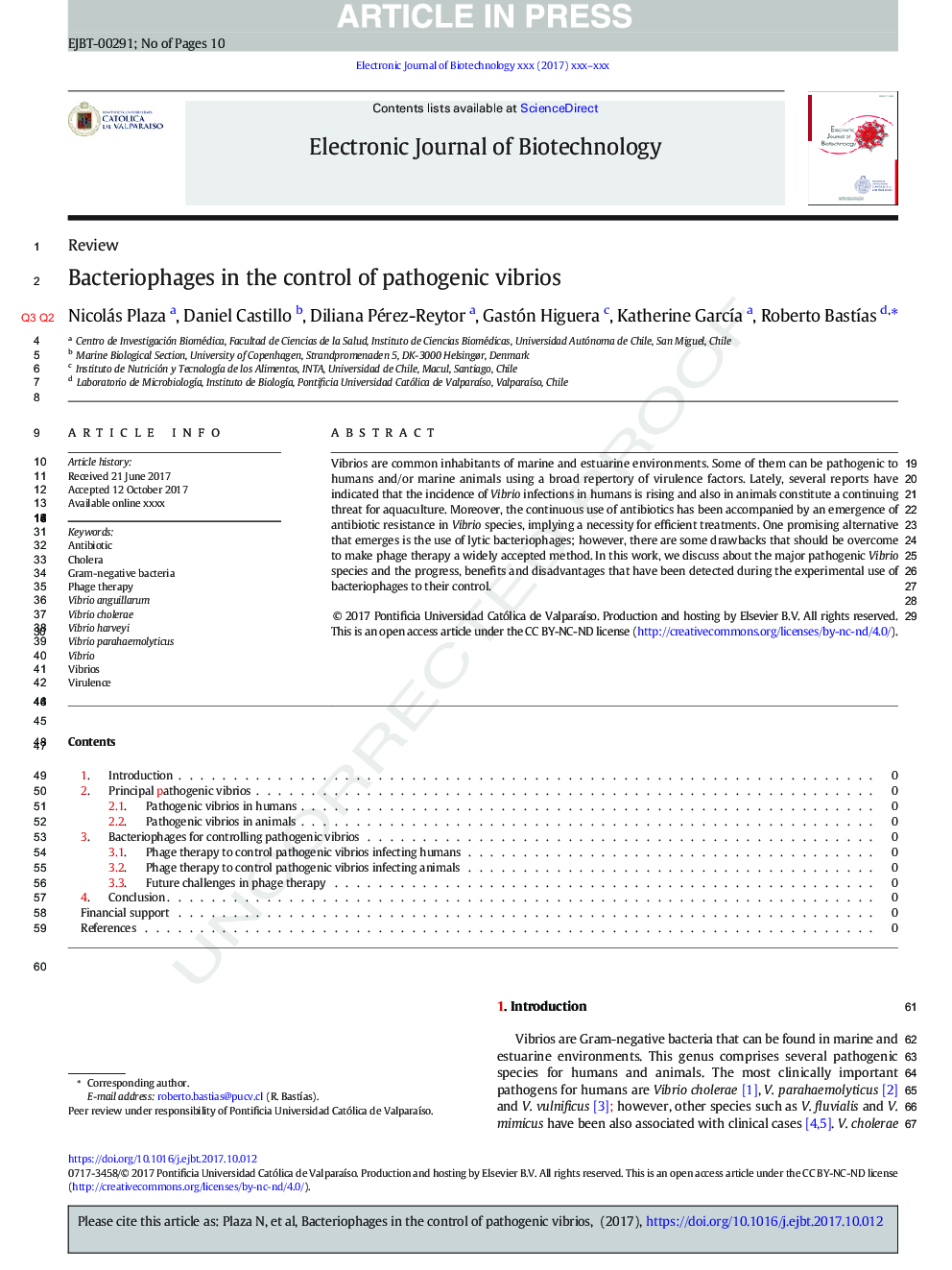| Article ID | Journal | Published Year | Pages | File Type |
|---|---|---|---|---|
| 6618545 | Electronic Journal of Biotechnology | 2018 | 10 Pages |
Abstract
Vibrios are common inhabitants of marine and estuarine environments. Some of them can be pathogenic to humans and/or marine animals using a broad repertory of virulence factors. Lately, several reports have indicated that the incidence of Vibrio infections in humans is rising and also in animals constitute a continuing threat for aquaculture. Moreover, the continuous use of antibiotics has been accompanied by an emergence of antibiotic resistance in Vibrio species, implying a necessity for efficient treatments. One promising alternative that emerges is the use of lytic bacteriophages; however, there are some drawbacks that should be overcome to make phage therapy a widely accepted method. In this work, we discuss about the major pathogenic Vibrio species and the progress, benefits and disadvantages that have been detected during the experimental use of bacteriophages to their control.
Keywords
Related Topics
Physical Sciences and Engineering
Chemical Engineering
Chemical Engineering (General)
Authors
Nicolás Plaza, Daniel Castillo, Diliana Pérez-Reytor, Gastón Higuera, Katherine GarcÃa, Roberto BastÃas,
